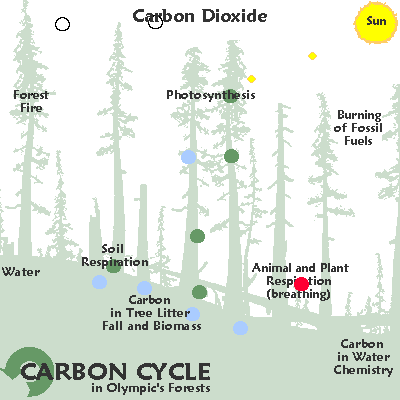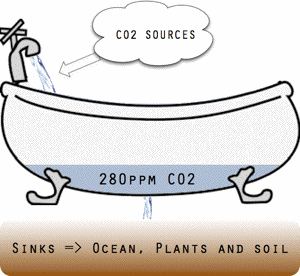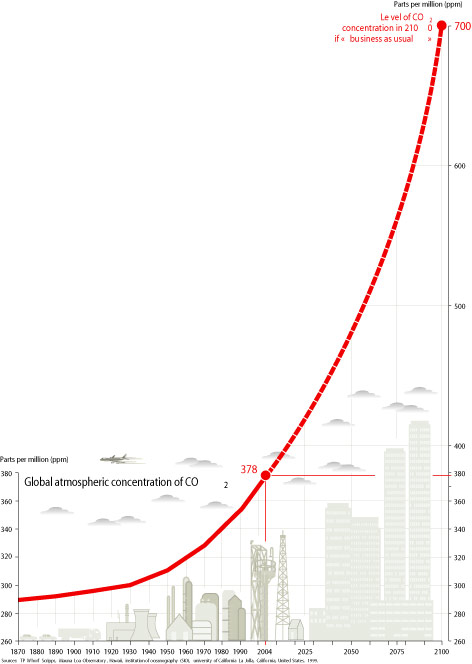Global warming as a social ecology dilemma
may also be thought of as both a cross-boundary and common property resources based international problem
affecting biodiversity, technology, population, human health, & sustainable development.
Atmosphere is | Greenhouse-heat trapping gases | Human fingerprint evidence

"Many
of the global environmental changes forced by human activities are mediated
through the chemistry of the atmosphere. Important changes include the
global spread of air pollution, increases in the concentration of tropospheric
oxidants (including ozone), stratospheric ozone depletion, and global warming
(the so-called greenhouse effect)."
(1)
"The process whereby air motions carry physical or chemical
properties from one region of the atmosphere to another are collectively
referred to as transport. Transport enables different chemical species,
with different local sources, to interact. Through transport processes
human activities have global consequences, changing the chemical balance
in remote regions of the atmosphere."
(23)
"The Earth's atmosphere can be thought of as a low-temperature
combustion system in which energy from the sun is employed to drive a wide
variety of oxidative processes."
(85)

The role of photosynthetic life in the carbon balance of the planet.
"The exact composition of the atmosphere is determined
by a complex chemical mechanism that consists of many thousands of elementary
reactions such as photolysis" (the breakdown by radiation with wavelengths
of the visible spectrum) of oxygen [O2] into ozone
[O3] and ozone into the hydroxyl radical [OH] and
the reaction of the OH radical with methane [CH4]
to yield water [H2O] and the methyl radical [CH3].
The reference to the earth's Greenhouse effect is a commonly
used but inaccurate description of the impact of combustion on the constituent
elements of the atmosphere. According to one text "It is known today that
the comparison of the atmosphere to a greenhouse is incorrect, but Fourier
(Jean-Baptiste-Joseph, French mathematician [1768-1830])
did suggest that the natural climate could be perturbed as a result of human
activities." (516)
"The energy provided by the Sun and absorbed by the Earth
is reradiated as infrared radiation. This energy is absorbed by clouds
as well as atmospheric molecules, the major absorbers being water vapor
and carbon dioxide; these two gases are sufficiently abundant to trap a
large fraction of the energy in the lowest layers of the atmosphere." (517)
Next
"These radiatively active gases, also called greenhouse
gases, absorb only a small fraction of solar energy, but they are very
effective in absorbing as well as emitting long wave radiation. Their net
effect is to reduce the amount of radiative energy emitted to space and
to increase the radiative energy provided to the surface-troposphere system."
(517)
 The carbon dioxide compound is capable of absorbing high frequency radiation and releasing low frequnecy radiation or heat.
The carbon dioxide compound is capable of absorbing high frequency radiation and releasing low frequnecy radiation or heat.
"The trapping of the radiation by radiatively active molecules
produces and increase in the surface temperature of about 33 degrees Celsius.
Without the 'greenhouse effect' the average temperature at the surface
would be only -18°C and life would not be possible on Earth." (520)
"As the concentration of several radiatively active gases
are increasing as a result of human activities, there is great concern
about the possible increase in the greenhouse forcing." (522)

"It is interesting to note that the past 10,000 years
in the history of our planet, during which civilization developed, were
warm and marked my relatively consistent weather." (523)
Next
"Human activities are, however, responsible for significant
changes in the abundance of other radiative gases...." (523)
"... an effective residence time of approximately 120
years for CO2." (530)

The potential role of carbon in a socially responsive and climate friendly system.
Atmospheric Chemistry and Global Change, Brasseur, Orlando, & Tyndall, eds. (New York: Oxford University Press,
1999).
Search this Site
Class Home | Markets | Solutions
| Index | Bibliography | Definitions
Archer | Broecker's signal | Christianson | Crowley | Gelbspan | James Hansen, 04 : Hansen
06 | Leggett | McKibben| Musil | Schmidt | Weart | Wigley



 The carbon dioxide compound is capable of absorbing high frequency radiation and releasing low frequnecy radiation or heat.
The carbon dioxide compound is capable of absorbing high frequency radiation and releasing low frequnecy radiation or heat.

